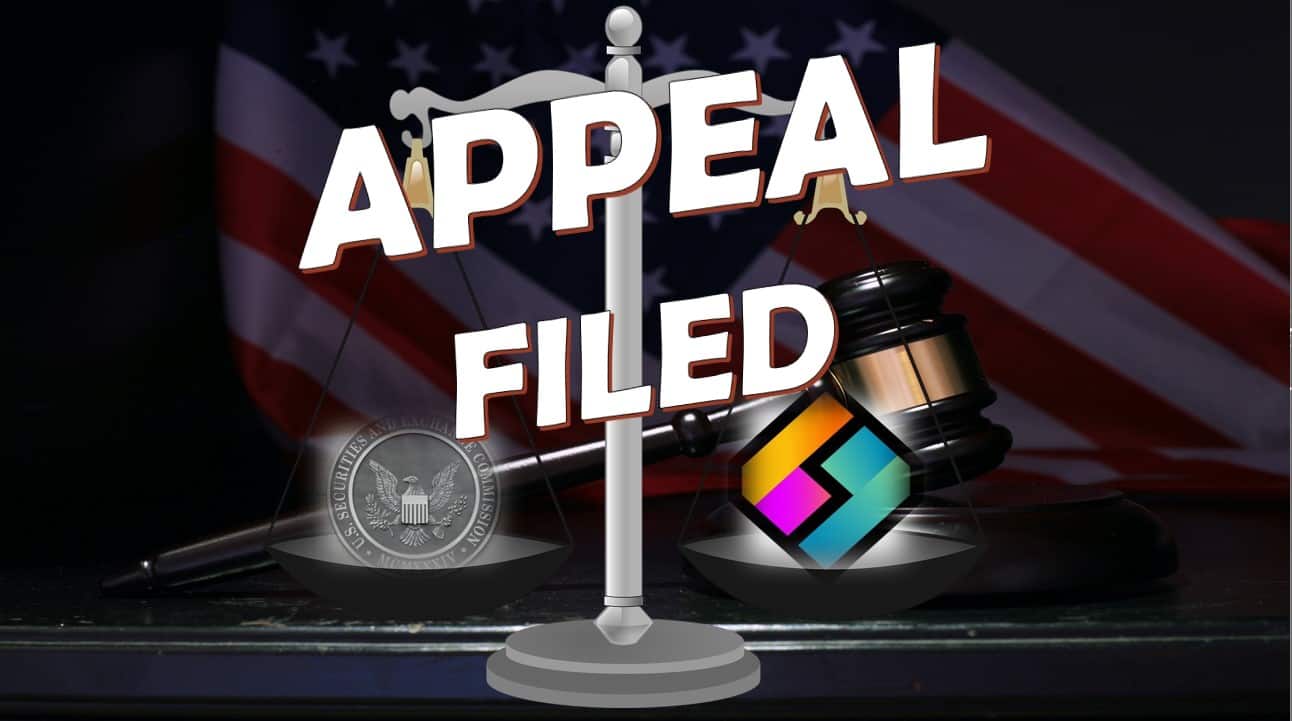
Unveiling Who Controls Cryptocurrency
Last updated on September 2nd, 2023 at 06:12 pm
Cryptocurrency is a new and innovative technology. Since the Bitcoin whitepaper was released in 2008, the idea of cryptocurrency, what it is, why it is, and how it works, have spawned questions from new investors entering the space.
One of the questions often asked is: who controls cryptocurrency?
A truly decentralized cryptocurrency, such as Bitcoin, has no centralized control. Cryptocurrency can be influenced by entities such as developers, miners, stakers, node operators as well as the users. Decentralized cryptocurrencies are just code, so they are a blockchain with rules but no rulers.
While this concept of crypto may almost seem straightforward, how these influencers exert pressure on cryptocurrency helps us to understand the control dynamic.
Let’s review each of these potential controllers and their roles surrounding a particular crypto.
- Cryptocurrency: Not All Are Created Equal
- Who Controls Bitcoin
- Other Crypto Influencers
- Control Equilibrium
- Conclusion
Cryptocurrency: Not All Are Created Equal
Cryptocurrency, and Bitcoin in particular, was created as an alternative to traditional financial systems.
It was envisioned as a secure and anonymous way of transacting value without the need for third parties such as banks or governments.
Crypto enables users to be their own bank. It accomplishes this by allowing users to interact with wallets that they control themselves, which allow them to interact with a cryptocurrency on the blockchain.
These wallets provide users with more control over their finances by allowing them to store, send, and receive money without having to rely on any central authority.
While all of these things about cryptocurrency are truly great, not all cryptocurrency blockchains are the same.
However, by design, each blockchain has its own set of rules or code by which it operates. These rules include things like the consensus protocols used to verify transactions and secure the blockchain.
Depending on the design and the number of people mining or staking, blockchains can have varying levels of decentralization.
More Centralized Cryptocurrencies
When a cryptocurrency blockchain is created, the developers are basically attempting to do 3 things simultaneously… make the blockchain as decentralized as possible, make the blockchain as scalable as possible, and make the blockchain as secure as possible.
For clarity, decentralization refers to the degree to which a network is distributed among its participants. The more miners or stakers, the more decentralized a blockchain is.
Scalability relates to how efficiently transactions can occur on a platform. This includes items like transaction speed, and total numbers of transactions per block.
Security obviously focuses on how secure the data is on a blockchain. This includes things like preventing 51% attacks for example.
In a nutshell, the blockchain security trilemma is the idea that all three of these aspects can not properly run concurrently given that each aspect can hinder the others if not properly balanced.
Now that you have an understanding about the trilemma, it’s easier to realize why blockchains prioritize certain aspects of this triad over another.
More centralized blockchains enjoy the advantage of faster throughput, which means more transactions in a shorter period of time.
However, they lack the same level of security and decentralization that is afforded by more decentralized blockchains. Additionally, some projects rely on these centralized networks to build their applications, as such, the central entity has control over how data is stored and distributed.
A couple of examples of these less decentralized blockchains include Solana (SOL) and Ripple (XRP). While these networks have a more limited level of decentralization, they are still considered secure and reliable cryptocurrencies.
However, the original cryptocurrency, Bitcoin (BTC), has a much slower throughput than this type of blockchain because it is much more decentralized.
Bitcoin: Pure Decentralization
Bitcoin (BTC) was created in the wake of the 2008 financial crisis. It is meant to be a digital, decentralized solution to the problem of financial centralization.
This decentralized currency can be used for free and instant transactions across the globe. By not requiring permission from any governing body or bank, Bitcoin eliminated the need for costly fees and long wait times that are associated with the traditional banking system.
This freedom from centralized control, combined with the unparalleled security of its blockchain, are the main reasons why Bitcoin continues to grow in adoption and is currently the most widely used cryptocurrency.
For these reasons, and many more, as we continue our discussion, it will revolve primarily around Bitcoin.
Who Controls Bitcoin
No one single entity or person controls Bitcoin.
BTC is a decentralized, open-source protocol that is managed by a global community of developers and secured by miners. The protocol receives periodic network improvements which help to keep the blockchain running efficiently.
Blockchain technology uses cryptographic algorithms and a Proof-of-Work consensus protocol to secure transactions. The blockchain is maintained by a wide network of independent nodes, which come together to create a consensus on the state of the ledger.
This protocol decentralizes control and eliminates any single point of failure. It makes Bitcoin systematic without the need for anyone to direct it.
So, Bitcoin, because it is a protocol based in code and mathematics, is fair and impartial without the need for any intervention, and is trustworthy without the need of an assurance from any outside entity.
However, while there is no one person or entity in charge of Bitcoin, there are groups who assist the blockchain to function smoothly.
Bitcoin Developers
The first group of people who wield some level of influence on Bitcoin are the developers.
Bitcoin developers are generally volunteers, who are made up largely of engineers, researchers, and coders who work to maintain the Bitcoin network and its underlying technology.
In short, they design new features, contribute to protocol upgrades, security patches and more. They all work together to ensure that the Bitcoin network is running smoothly and securely.
After reading that you might think that these developers absolutely control Bitcoin… but this is not the case.
Because Bitcoin is a peer-to-peer network, the users can choose how they want to operate in the system.
So for example, if developers change something users and miners don’t agree with, they don’t have to upgrade to the latest iteration, they can just continue to operate as they were.
So it makes sense that Bitcoin developers would want to create and maintain the network with the best interest of Bitcoin in mind.
However, the next group of people involved with Bitcoin and its operation are not volunteers and they certainly have some say in the direction of the network.
Bitcoin Miners
The next group that has some influence over the Bitcoin network are the miners. Bitcoin miners are the backbone of Bitcoin’s network security and play an important role in its operations.
Using a consensus protocol, Proof-of-Work (PoW), they solve complex mathematical problems to earn the right to mine a block. For completing this task, they are rewarded with BTC. This process is known as mining.
A miner’s success depends on how much computing power they use and how quickly they can solve these cryptographic puzzles. The faster these puzzles are solved, the greater the opportunity a miner has to create a block on the BTC blockchain and earn the reward for doing so.
If Bitcoin had a heart, the miners would be the group that keeps it beating!

So, after reading all of that, you might consider miners as having primary influence over Bitcoin… but that would not be true either.
While it is true that a miner can choose which pending transactions get included in the block that they are validating, an ability some consider a censorship of transactions, other miners will happily include those transactions in another block to gain the fees associated with them.
Furthermore, if a miner tried something nefarious, like rewarding themselves with more BTC for example, this would be rejected by the nodes…. which would mean a miner would have expended all that energy output for nothing. Thus, they would lose money.
So it’s easy to see how the miners are incentivized to maintain the security of the network through their mining operations. However, this next group has to be convinced to accept developer upgrades.
Bitcoin Nodes
Bitcoin node operators are the next group who help the network operate smoothly. Technically, any computer that is connected to the Bitcoin network can be considered a node, as long as it is running compatible software.
Despite this, nodes are typically, though not wholly, run by operators such as cryptocurrency exchanges, data centers, universities and other such businesses.
Nodes help maintain consensus on the network by making sure all nodes agree on what constitutes a valid block in the chain.
So, if a miner attempts to add an invalid block for example, nodes will reject it so that the network can maintain consensus.
Nodes also guard against malicious actors by voting with their computing power to accept or reject changes proposed by developers.
Nodes are incentivized to vote according to what is best for the network and reject changes that could potentially harm the network.
Think of nodes like a referee in a sporting event… they ensure miners and developers are following the rules and exhibiting good sportsmanship.
While these 3 main players help maintain the flow of the protocol, other entities can still influence the network, albeit in different ways.
Other Crypto Influencers
While helping a protocol and blockchain like Bitcoin run smoothly is one way to look at control, there are many other variables that can contribute to the health and stability of a cryptocurrency.
Price volatility, access to a cryptocurrency, regulation and adoption are certainly factors that can help influence the direction of a crypto.
So groups like exchanges, crypto whales, governments and regulators all have the ability to influence cryptocurrencies in different ways.
Let’s discuss exactly how they can exert this influence…
Cryptocurrency Exchanges
Cryptocurrency exchanges are the main gateway by which people enter the cryptocurrency market.
These platforms provide users a place where they can buy, sell and trade cryptocurrencies as well as being the on/off ramps for fiat currencies. As such, they can influence crypto price volatility as well as control access to exactly what cryptos an investor can invest in.
Because of this, these exchanges can have a significant influence on how much a cryptocurrency is worth and the supply and demand for it.
If you are new to cryptocurrency and want to get set up with a centralized cryptocurrency exchange to start your journey, I recommend Coinbase and Gemini.
The next group uses exchanges to exert their influence on the crypto space actually invest in it.
Crypto Whales
Crypto whales are large investors who often hold significant amounts of a particular cryptocurrency.
These individuals can have a tremendous influence on the market, as they often possess enough power to manipulate prices and volumes through buying and selling huge chunks of crypto.
Many people in the cryptocurrency space track whale wallets.
This is especially true with Bitcoin (BTC).
By investing vast sums of money into different cryptocurrencies, whales become major market players that can effect the entire market.
Many times, all a whale has to do is move their crypto and the market reacts.
Whales can influence the crypto market if they decide to sell large amounts of a particular cryptocurrency for example.
This can cause prices to drop dramatically and lead to an overall market downturn.
On the other hand, if whales buy up huge chunks of a particular coin, this can drive prices up significantly causing demand to outstrip supply.
Another favorite whale tactic to influence a particular crypto is through arbitrage and trading large positions, thus causing market manipulation.
The next influential group continually influencing the cryptocurrency space often cite the tactics of whales and exchanges as their reason for doing what they do.
Governments & Regulators
Make no mistake, governments and regulators across the globe are tagging in to fight against cryptocurrency.
These fights are coming from all angles. From things like Proof-of-Work (PoW) being environmentally unfriendly, to most cryptocurrencies actually being securities, to outright bans on meme coins and NFTs, the cryptocurrency space is under fire.
As financial institutions and countries become more aware of the potential for digital currency investments, many have begun to take steps towards regulating cryptocurrencies.
Regulators have implemented a variety of measures, including restrictions on exchanges, implementation of anti-money laundering (AML) and know your customer (KYC) measures, as well as taxation.
While governments and regulators state that regulations are created with the intention of protecting investors from any potential risks associated with their digital asset investments… anyone in the space will tell you a more plausible tale, about these regulations being about control.
We will see continuing efforts to create a regulatory framework for cryptocurrency exchanges and trading platforms.
Keep in mind, this primarily affects centralized entities… DeFi, done correctly, can not be contained inside governmental framework.
While many fear that governments and regulators have the power to determine a cryptocurrency’s success or failure, this is not necessarily true.
Adequately decentralized cryptocurrencies can remain outside the purview of any government or agency regulation.
Stay up-to-date on the latest information about cryptocurrency regulations on our blog as well as our YouTube channel.
These varying regulations ultimately affect the final group of cryptocurrency influencers the most.
Crypto Community
In many cases, the community around a particular cryptocurrency can often make or break that crypto.
In a nutshell, a cryptocurrency community is a global network of individuals and organizations, connected by their passion for a digital asset.
This diverse set of individuals provides an invaluable service to the industry, as they are the ones who actively promote projects, engage with it as users, and help to spread the word about the space.
Let’s face it, without them, the space would be much less dynamic and vibrant.
They are the ones who actively work to share knowledge, network with like-minded people, and spread awareness about new projects. The cryptocurrency community has the potential to make a huge impact on the industry and has already been instrumental in driving its development.
But more than that, the crypto community in general, as well as in private crypto communities specifically, not only shout accolades, but because of the buzz they create, they can influence price action of a crypto.
Some good examples include Elon Must influencing the price of Dogecoin (DOGE) and the Shiba Unu (SHIB) community wanting to overtake DOGE.
If you are part of the crypto community, take pride in being part of it and remember that you can help shape the future of this space.
Now that we’ve discussed an overview of the different ways that people attempt to control and otherwise influence cryptocurrency, the question is, how does this all balance out?
Control Equilibrium
It seems like everywhere we look, there are quotes about having balance. Balance in nature, balance in life, balance in health… the list can go on and on.
“Examples of balance can be found everywhere, even in those places where you least expect them”
– Dr Patrizia Collard, The Mindfulness Bible
Thanks to the decentralization of a cryptocurrency like Bitcoin, we can find balance here as well.
So, because Bitcoin for example, is designed with decentralization in mind, no one entity has the power to control it or overtly manipulate it.
The nature of the roles of the developers, miners and nodes, ultimately balance each other out when it comes to their ultimate control over a crypto.
However, let’s not forget that there are other entities who also exert influence. These external influences, such as governments and regulators, definitely have an influence, but are not able to disrupt the network in any meaningful way.
This creates an equilibrium where all parties involved have an incentive to maintain the integrity and stability of the system.
To use Newton’s First Law as an example:
If all the forces add up to zero, an object experiences an equilibrium state
Ultimately, this balance between different groups helps to provide an atmosphere where cryptocurrency can thrive and evolve. It is this balance which allows for progress and innovation to take place.
Conclusion
For the most decentralized cryptocurrencies, there is no one person or group that controls it.
Groups, such as developers, miners and node operators can influence the protocol governing a particular crypto.
Furthermore, other outside entities such as exchanges, crypto whales, governments and regulators can exert some influence over the space.
However, thanks to crypto’s decentralized nature, a delicate balance is struck and maintained. This balance allows for the space to thrive and further development to prosper.
Disclaimer
The information provided here is for INFORMATIONAL & EDUCATIONAL PURPOSES ONLY!
View our complete disclaimer on our Disclaimer Page








